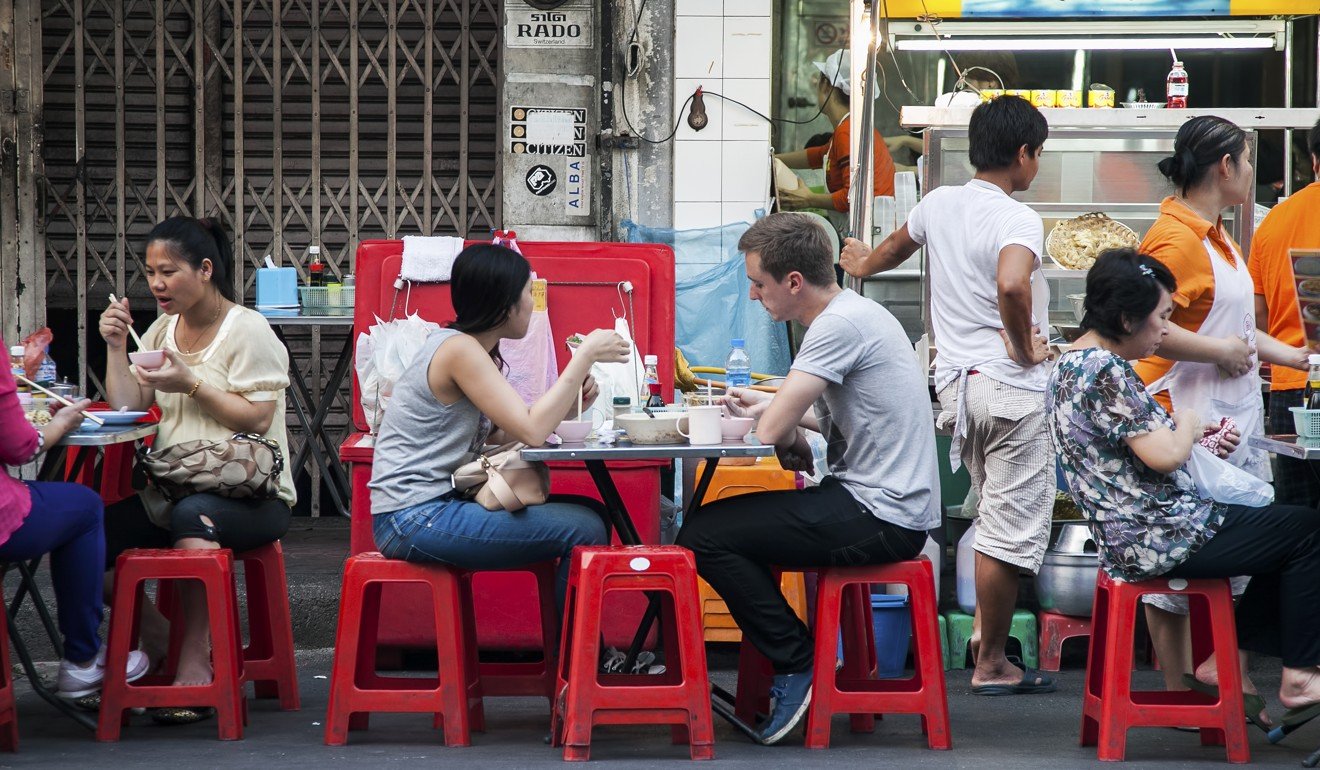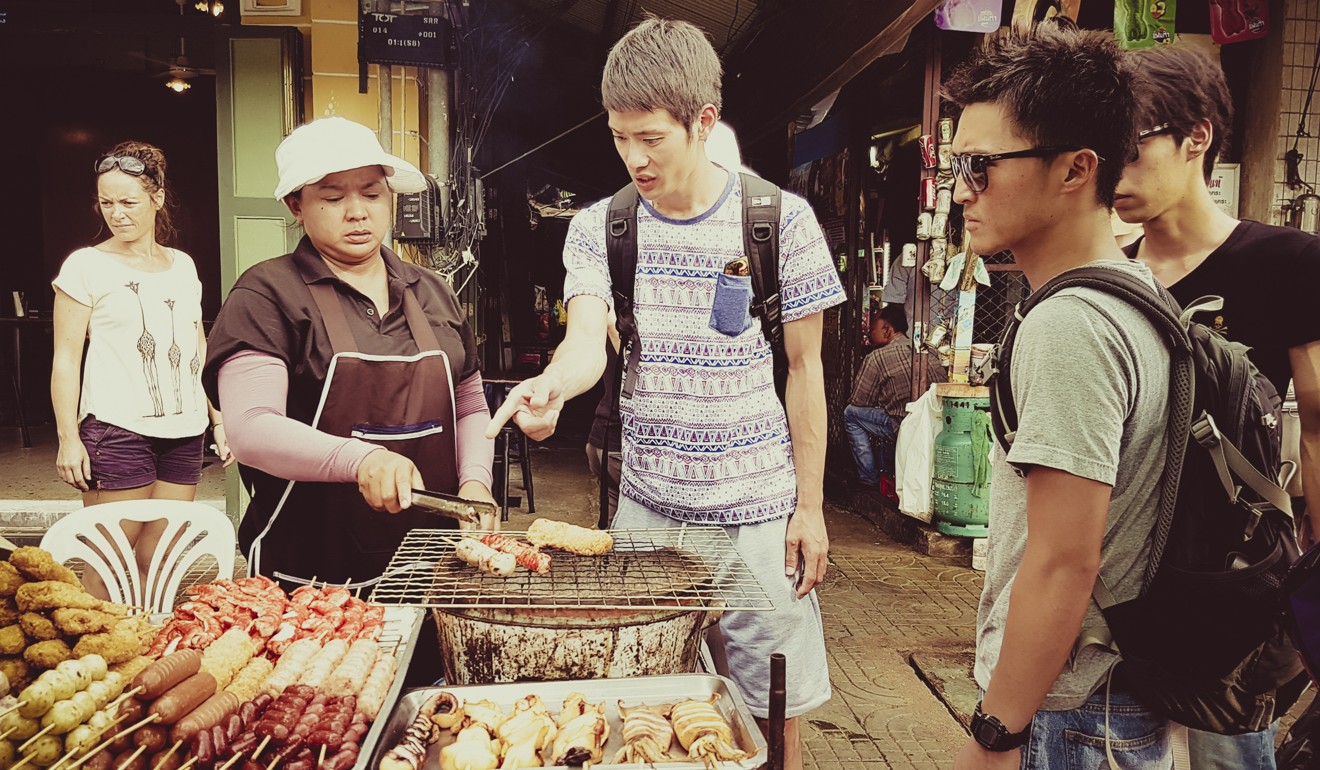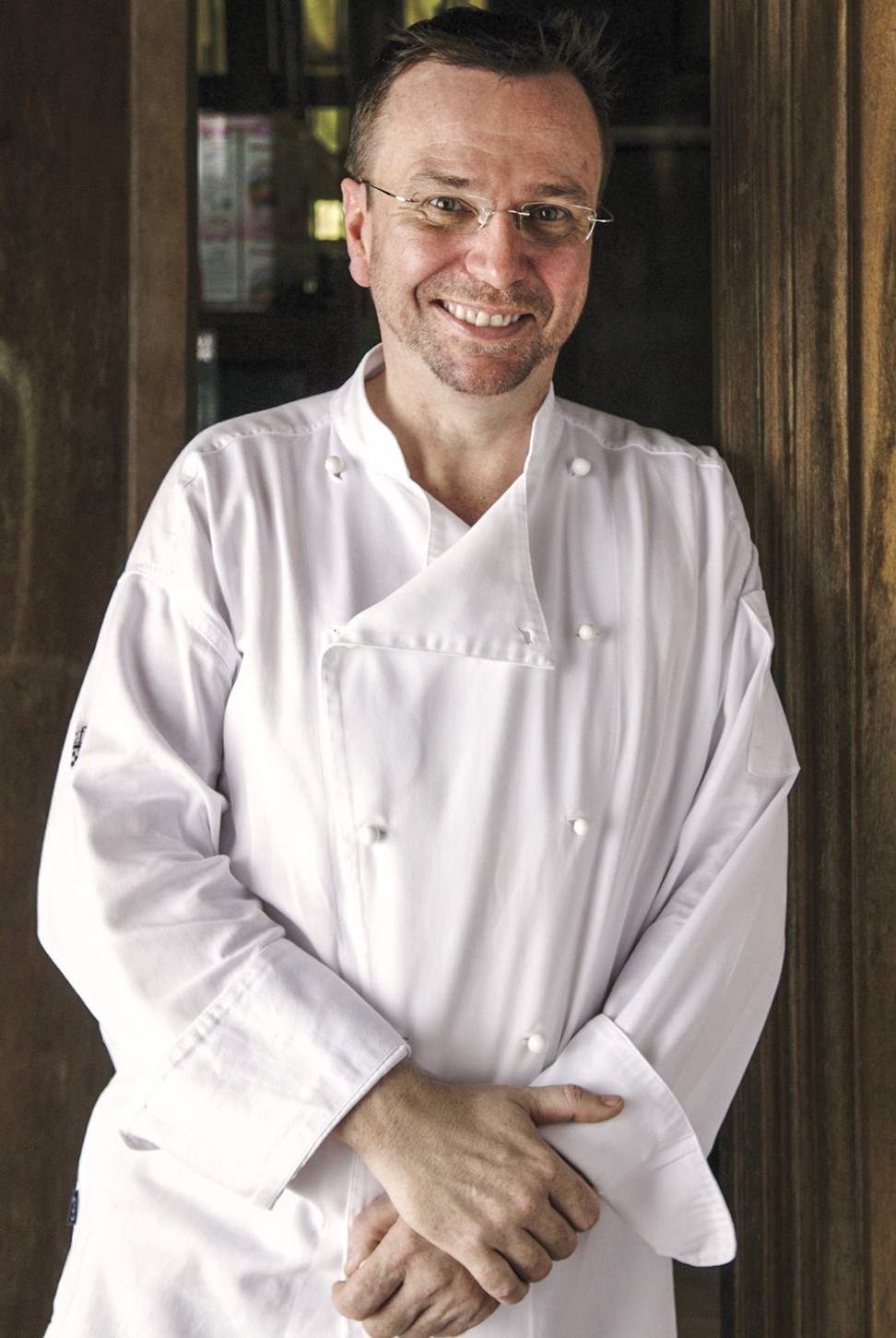
Bangkok street food vendors’ removal sparks debate about whether Thai capital’s food culture can survive
Loss of a signature feature of the city, ostensibly to clear footpaths for pedestrians, divides residents and visitors
The French have their cheeses and wines; the English have their fish and chips; the Germans have their sausages and beers, and the Thais have their street food – regularly cited in travel polls as the world’s best.
Thai junta’s crackdown on Bangkok street food intensifies with ban now taking effect across the entire city
There’s little wonder then that much debate was stirred up by the Bangkok Metropolitan Administration’s announcement that it intended to purge the city’s streets of the popular delicacies.
All manner of stalls, makeshift carts and trolleys have long been a common sight on the pavements of Bangkok.

For a couple of US dollars, locals and tourists alike enjoy such food as kwea teow (noodles with fish balls), gai pad med mamooang (chicken with cashew nuts), neaua yang (strips of barbecued beef), and a host of other delicious dishes and snacks.
A post shared by Amine Lakhdari (@amine.lakhdari.33) on Sep 27, 2017 at 8:51am PDT
The April announcement, by Wanlop Suwandee, chief adviser to Bangkok’s governor, caught many by surprise. Wanlop said the local government was “working to get rid of stalls from all 50 districts of Bangkok” and “return the pavements to pedestrians” by the end of this year.
Rather than imposing an outright ban on the sale of food on the streets, however, the government says its intention is only to reorganise and regulate vendors to ensure higher quality and better hygiene.
Bangkok’s legendary street-food scene in peril, as junta sours on ‘nuisance’ vendors
A total of 6,334 food vendors are affected by the clean-up, according to the National News Bureau of Thailand, and will be given the opportunity to set up their stalls in specially designated markets and food centres.
The government insists it is responding to numerous complaints both from locals and tourists that the streets are often blocked and at times impassable, not to mention dangerous, with hot vats of cooking oil and charcoal burners laden with woks dotting public walkways.
A post shared by Epicurean Indonesia (@epicurina) on Sep 30, 2017 at 9:17pm PDT
While some see the changes as necessary to better showcase Thai street food, others see it merely as a form of gentrification, with something vital and culturally ineffable being lost in Bangkok, a sprawling city of more than nine million people.

“I can understand and sympathise with those who say Bangkok is losing yet another part of its cultural identity, and there’s no denying that street food is a very important aspect of daily life here in Thailand,” says Phil Williams, an expat who has been living in Thailand for more than 20 years and owns the education website ajarn.com.
Where to find Bangkok’s best street food – before gentrification sweeps stalls away
Williams does not necessarily believe that the street clean-up will sound the death knell for Thai street food, though. “I don’t think moving street food to established zones will make a great deal of difference, to be honest, in terms of how street food is perceived.”
Irene Chang, a marketing manager from Taiwan who visits Thailand often, sees the need for improvement in how food is sold on the streets of Bangkok but sees a quandary in how the culture can be kept alive.
A post shared by Kang Eeb (@abdullah.hadiansyah) on Sep 30, 2017 at 5:13pm PDT
“One of the attractions in Thailand is their diversity of food, and street food represents local culture that is affordable. They do have hygiene concerns though. So if the purpose of established eating zones is to enhance the image of Thai food for tourists, the government needs to make the food cleaner and establish hygiene-assured zones but still keep the food stall culture.”

Another long-term foreign resident, Pattaya-based expat publisher Derek Sharron, sees no benefit in the initiative. “Thailand has a great reputation for food within the country, on the street, at fairs, festivals, restaurants and everywhere. Thai food is also available and loved all over the world, from East Asia, the Middle East, and Europe to America,” he says.
A post shared by Frederika Hillebrandt (@__vrede) on Oct 1, 2017 at 7:54am PDT
Australian chef and Thai food expert David Thompson, who runs the award-winning Long Chim Thai restaurants in Singapore and Australia, among others, and wrote the book Thai Street Foods: Authentic Recipes, Vibrant Traditions, says Thais love their food.
“I’ve never met such a people who eat so much, who think about food so much – it’s the national pastime, frankly,” Thompson told The Sydney Morning Herald. “Whether it’s a stir-fry with a smack of chilli and holy basil and beef or a salad or a dessert – they eat all the time, and having food on the streets means they’re able to do that.”

The BBC lamented the loss of a tradition that brings together people from different cultures and classes. “The street stall is one of few places where business persons can mingle with the people who clean toilets and drive taxis,” the broadcaster reported. “Sitting on the same plastic stools, everyone slurps the same noodle soups with well-worn chopsticks and bent spoons.”
The tradition of street food in Thailand is more than 100 years old and, in the modern era, started around the turn of the 20th century.
A post shared by Camila Matta (@camismatta) on Sep 30, 2017 at 1:14am PDT
The pioneers were among an influx of Chinese immigrants, who famously came to Thailand with little more than the shirts on their backs – a plight Thais refer to as seaua peun, mawn bai, or “one rug and one pillow”.
As they prospered and set up shops, it was not uncommon to see Chinese merchants with open shopfronts. Ready-to-eat food was placed on carts in front of their shops, the aromas wafting down the streets to tempt passing pedestrians. In the true spirit of Asian entrepreneurialism, it was not long before mobile food carts evolved.

With the highly successful “Amazing Thailand” tourism promotion in the late 1990s, millions of Western holidaymakers flocked to enjoy the delights of Thailand’s white-sand beaches, nightlife and exotic food. In tandem with the boom in visitor arrivals came a huge increase in the numbers of portable food stalls. However, exponential growth and a lack of regulation over the past two decades has led to today’s chaotic streets.
A post shared by Cffthailand.com (@kingmoji) on Sep 30, 2017 at 7:14pm PDT
Thailand has been one of the greatest tourism success stories of the past 30 years. Visitors spent U$14.1 billion in the Thai capital last year alone. In a recent United Nations survey, Thailand was identified as the ninth most visited country on the planet, and with the projected numbers of visitors reaching 34.1 million in 2017.
Bangkok is the world’s leading destination city, with 19.41 million overnight international visitors in 2016, according to an annual survey. The research, released by Mastercard last week, estimated visitors spent US$14.1 billion in the Thai capital last year.
Thai food is great. Except maybe when it’s served at the national parliament canteen
It also anticipates a 4 per cent increase in visitors descending on Bangkok this year, which appears to negate fears that a campaign to transform the streets will kill off one of the city’s unique characteristics and make it less appealing to tourists.
With tourism revenue accounting for around 15 per cent of GDP, the government has become dependent on the vast sums holidaymakers bring into the country. Accordingly, it has been under pressure to make changes to accommodate new guests and ensure that others return.
Why is Bangkok banning its famous street food stalls
The street clean-up is part of the plan. Whether or not street food makes any fundamental difference to the economy is questionable.
There have been changes in the demographics of Thai tourism in recent years. Previously, the largest number of visitors came from the European Union, Scandinavian countries and North America. Nowadays, the largest percentage of tourists flock to the country from other part of Asia, most notably India and China.
Chinese visitors make up the largest visitors to Thailand, at 30 per cent of the total, according to the
Tourist Authority of Thailand. It says there has been a 9 per cent annual increase in Chinese tourists in recent years, with projections for the number to reach 9.5 million this year.
A post shared by KELVIN (@kelomilo) on Oct 1, 2017 at 1:36am PDT
According to the Kasikorn Research Centre in Bangkok, Chinese tourists accounted for about 438 billion baht (US$12.4 billion) of the 1.64 trillion baht Thailand earned from foreign tourists in 2016.
Dhanin Chearavanont, a descendant of Chinese immigrants and chairman of conglomerate the CP Group, must be pleased with the campaign to clean up Bangkok’s streets. Go into any one of the 10,000 7-Eleven convenience stores his company operates in Thailand on any given day between 5pm and 6pm, and you will find a hive of activity.
Delicious expedition: Bangkok’s street food
Queues of young and old Thais form an orderly line to buy ready-made meals and other cheap options such as frozen rice dishes. Sales have been even more brisk in Bangkok since the new regulations were put in place, as Thais, bereft of erstwhile street food choices and wanting convenience after a hard day’s work, head for the checkout.
